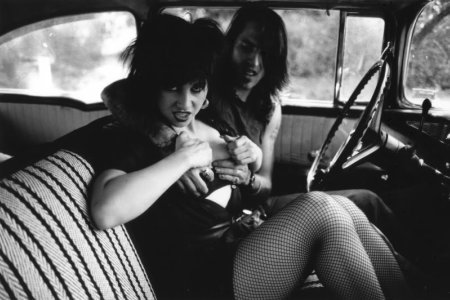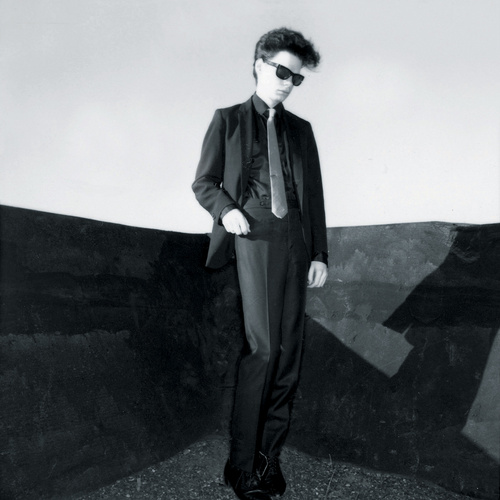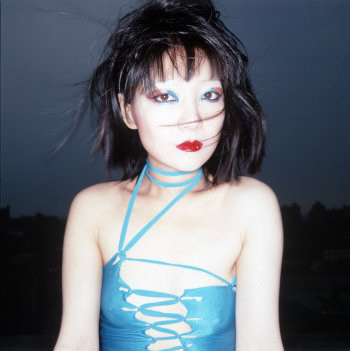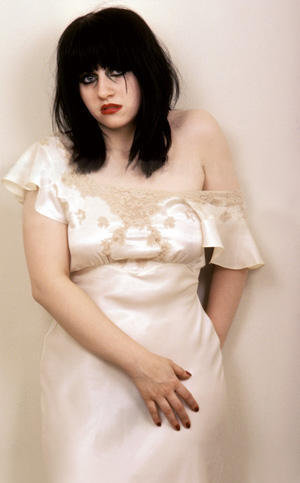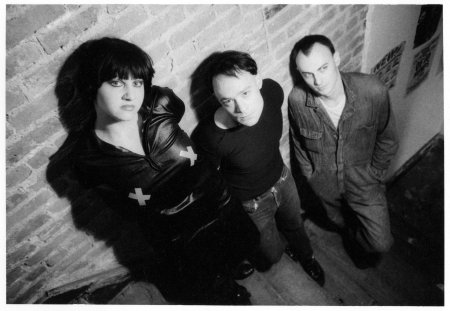|
No Wave Style
No Wave was a name applied to a loose group of NYC artists in the late 1970s and early 80s. This movement, contemporaneous with the tail-end of early punk, was often nihilistic, with abrasive music and confrontational stage shows. The movement started out as a loose collection of musicians and artists in New York City, who played atonal music with pounding, driving rhythms. Bands like Mars, DNA and James Chance and the Contortions made music that was abrasive, loud and sometimes depressing, reflecting the "wild west" atmosphere then present in NYC's Lower East Side. Many members of the no wave movement had started out as visual and performance artists, who turned to the music scene because it was much more vital. Because of this, No Wave always had a more artistic, even intellectual side than punk rock. You couldn't sound like these bands if you knew how to play. You couldn't make one of these films if you knew how. That's the thing that was really unique--these things were done by people who were really sophisticated intentionally, but their knowledge of technique was primitive. What made it so exciting was the contradiction and the friction between those two things. Nobody's qute sure how the term was coined. 'No Wave' is, of course, a reference to the then-popular, watered-down version of punk called 'New Wave,' as played by bands like Blondie and The Talking Heads. These young people wanted to say "No!" to the commercialized, artificial side of what rock and punk had become in the 1970s, as well as the cliched three-chord song structures that punk hadn't really improved upon.
True to form, many photos from the No Wave era show band members, and audiences alike, dressed in a more "grown-up" style than punk rockers did. Rumpled, second-hand suits, button-up shirts with collars, pants with belts (remember those?), biker jackets and old sweaters were mainstays of many of these members's closets. The focus of this movement was on nihilism, on rejecting past norms, on using the tools of society against society itself. There was therefore no real uniform in this group, though this philosophy was reflected in their sartorial style. The most sartorially inventive members of this movement were Anya Phillips and Lydia Lunch. Phillips designed many collections of clothing, including some outfits for Debbie Harry. Phillips also worked as a dominatrix, which lent some of her designs an S&M feel.
Lydia Lunch, the lead singer for Teenage Jesus and the Jerks, was barely fifteen when she ran away to New York City and made her living as a squatter and hustler. According to Paradoxia: A Predator's Diary Lunch often wore S&M inspired outfits, as well as black tights and miniskirts, often with a grungy sweater. Many pictures show her in all black. Lunch also dyed her hair black and let her bangs grow and down to her eyes. It's probable that she only had a limited number of outfits, which needed to be easily packed or carried. Lydia also wore a great deal of makeup, especially dark red lipstick, dark eye makeup and two slicks of dark blush along the sides of her cheeks, creating a strange contrast with her very youthful face. Often Lunch's face was almost unrecognizable behind a black fringe and dark sunglasses. Perhaps that was the point.
Today, it's a slightly novel experience to see photographs of young people (especially young men) in clothing that actually fits them. People have therefore called no wave's clothing "tight." It isn't really, it's just well fitting, although tight jeans were then seen as a rejection of the flared bell bottoms that were then a mainstay of most department stores. With a few exceptions, most members of no wave seemed to keep their hair short. In the late 1970s this was something of a rebellion, since even mailmen and civil servants had started growing their hair long. Most punks and proto-goths had short hair.
No Wave filmmakers like Amos Poe deliberately harkened back to the classic, black-and-white noir films of the 1940s. Others, like Vivienne Dick, just had their actors wear their regular clothes. This movement's artistic legacy lives on in acts such as the Yeah Yeah Yeahs. Even Lady Gaga has borrowed from no wave (but what hasn't she borrowed from?). Filmmakers like Richard Kern and Nick Zedd kept it alive throughout the 80s in the Cinema of Transgression. Recently, Thurston Moore and Brian Coley released a pretty good book detailing the scene's origins, creations and eventual demise. Related Reading: No Wave Postpunk Underground by Moore and Coley Please Kill Me: An Uncensored Oral History of Punk Topmost photo, from Fingered, by Richard Kern. Used with permission. Return to Enjoy Your Style's subcultures section. Return to Enjoy Your Style's home page. Search Enjoy Your Style: |





